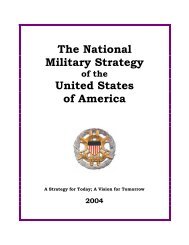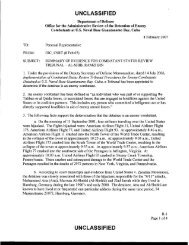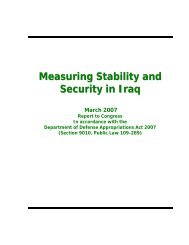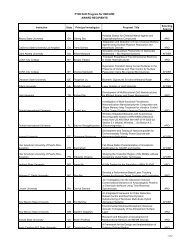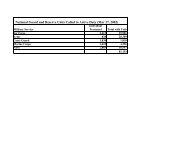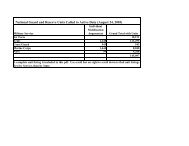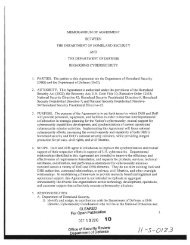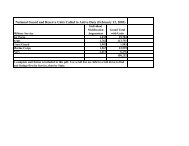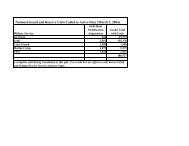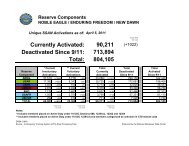Report - United States Department of Defense
Report - United States Department of Defense
Report - United States Department of Defense
You also want an ePaper? Increase the reach of your titles
YUMPU automatically turns print PDFs into web optimized ePapers that Google loves.
UNCLASSIFIED<br />
Towards the end <strong>of</strong> the reporting period, ISAF and ANSF were focused on a growing battle in<br />
Warduj District, Badakshan Province. In early March, an ANSF contingent maneuvered through<br />
Warduj District to stage forces and provide logistics support to ANSF units already in the<br />
district; insurgent forces ambushed the contingent. The ANSF was caught largely unprepared, as<br />
this was the first major engagement since the start <strong>of</strong> winter. The ANSF sustained heavy<br />
casualties from the fighting and initially lost ground to the insurgents. The ANSF requested and<br />
on this occasion received coalition close air support, and called in further ANSF reinforcements.<br />
The AAF successfully provided support. As <strong>of</strong> the end <strong>of</strong> the reporting period, this fighting was<br />
ongoing.<br />
REGIONAL COMMAND – CAPITAL<br />
Kabul is one <strong>of</strong> the least violent areas <strong>of</strong> the country, with some <strong>of</strong> the best ANSF units<br />
providing security. Improved capability and cooperation between Afghan security elements<br />
continues to suppress insurgent activity within Kabul Province; however, the few successful<br />
suicide attacks that occur in the capital will continue to draw a disproportionate amount <strong>of</strong><br />
international media attention.<br />
The ANSF has led security operations in Kabul since August 2008 and has demonstrated<br />
improving capability every year since. There were eight HPAs in RC-C this cycle, compared to<br />
three HPAs during the same period in 2011-2012. Despite the HQN planning and facilitation for<br />
most <strong>of</strong> the attacks in Kabul, the Taliban continued to claim credit for insurgent activity in RC-C.<br />
The HQN accounted for two <strong>of</strong> the last seven HPAs targeting ANSF and ISAF stationary<br />
positions and mobile convoys, and assassination attempts <strong>of</strong> GIRoA <strong>of</strong>ficials. Apart from<br />
gaining disproportionate media attention, these attacks were largely unsuccessful and resulted in<br />
only minimal disruptions <strong>of</strong> GIRoA operations. Kabul City remains a primary target <strong>of</strong><br />
operations facilitated by the HQN due to the pronounced media attention and political exposure<br />
successful attacks generate.<br />
The number <strong>of</strong> threat reports in Kabul doubled in comparison to the same period in 2011-2012.<br />
This increase reflected persistent insurgent efforts to conduct HPAs and may also represent an<br />
increased interaction and trust between the populace and the ANSF and ISAF. The significant<br />
reduction in effective insurgent attacks and HPAs in Kabul City is the direct result <strong>of</strong> successful<br />
ANSF security measures. Combined operations by NDS and Afghan and ISAF Special<br />
Operations Forces will continue to disrupt insurgent attack cells and facilitation routes.<br />
1.6: TRANSITION<br />
ISAF's mission focus remains the protection <strong>of</strong> the Afghan people by supporting the sovereign<br />
government in the development <strong>of</strong> a national security force capable <strong>of</strong> assuming full<br />
responsibility for security operations by the end <strong>of</strong> 2014. Upon entry by Province, District or<br />
city into transition, the ANSF will assume the lead for security in that area and become the<br />
supported command, with ISAF becoming the supporting command. During the transition<br />
process, staff functions are steadily transferred to ANSF in stages as their capability<br />
increases. ISAF retains military assets in or near transitioning areas, and when required, engages<br />
in combat operations alongside the ANSF. As the ANSF takes on more <strong>of</strong> the lead for security<br />
28



